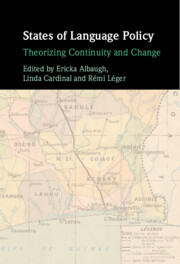Part III - Levels of Governance
Published online by Cambridge University Press: 14 November 2024
- Type
- Chapter
- Information
- States of Language PolicyTheorizing Continuity and Change, pp. 207 - 286Publisher: Cambridge University PressPrint publication year: 2024

